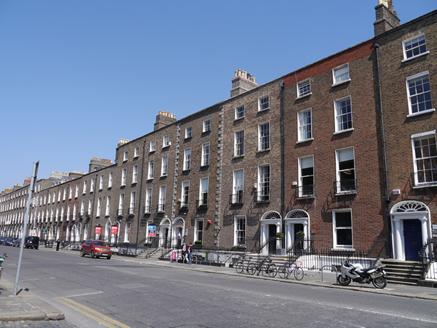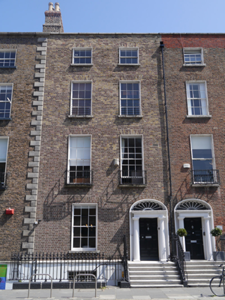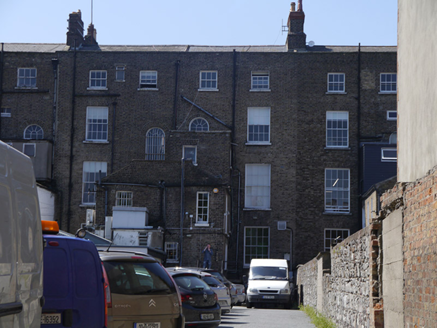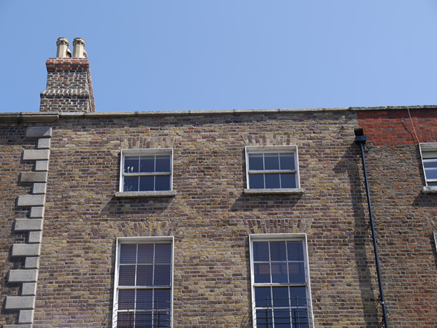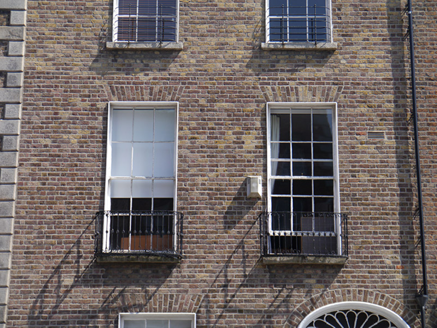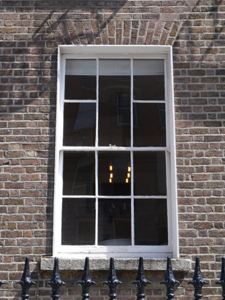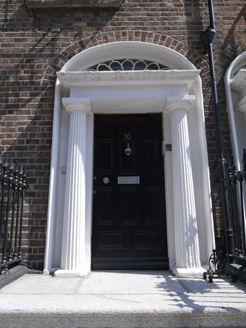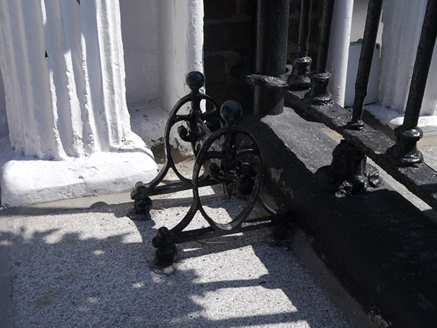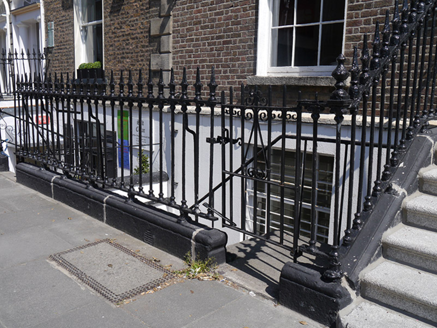Survey Data
Reg No
50100566
Rating
Regional
Categories of Special Interest
Architectural, Artistic
Original Use
House
In Use As
Apartment/flat (converted)
Date
1815 - 1835
Coordinates
316992, 233295
Date Recorded
03/06/2016
Date Updated
--/--/--
Description
Attached two-bay four-storey former house over basement, built c. 1825 as part of terrace of six (Nos. 27-32), having two-storey return to rear with hipped roof, and further flat-roofed storey added to south end. Now in use as apartments. M-profile pitched slate roof, having parapet with granite coping and parapet gutters, shouldered brick chimneystack with yellow clay pots, and shared replacement aluminium downpipe. Brown brick walling laid in Flemish bond, rebuilt above voussoir level of first floor, on granite plinth course over painted ruled-and-lined rendered basement walling. Square-headed window openings, diminishing in height to upper floors, with granite sills, patent reveals and brick voussoirs. Round-headed stairs window to rear. Timber sliding sash windows throughout, six-over-six pane to ground, first and second floors with cavetto horns (missing glazing bar to ground floor), three-over-three pane to top floor and ten-over-ten pane to basement. Decorative wrought-iron balconettes to first floor, wrought-iron window-guards to second floor and steel grille to basement. Rear elevation has three-over-three pane to top floor and eight-over-eight pane to lower floors. Elliptical-headed doorway with moulded surround, painted masonry doorcase with pro-style fluted Doric columns, entablature, decorative peacock's tail fanlight and replacement eleven-panel timber door. Granite entrance platform with ornate wrought-iron boot-scrape and six granite steps. Decorative spear-headed cast-iron railings on painted moulded granite plinth enclosing basement area. Wrought-iron gate and concrete steps provide access to basement area. Square-headed door opening beneath entrance platform with replacement door. carparking to rear of plot.
Appraisal
This Georgian house, built by David Courtney in the early decades of the nineteenth century, forms part of a coherent terrace of six houses (Nos. 27-32). The restrained front elevation exhibits well-balanced proportions and graded fenestration typical of the period, enlivened by a good Doric doorcase, a pretty fanlight and later balconettes. The fabric and architectural character are well retained to Mount Street Upper, making a strong contribution to the wider historic core of south Dublin. The street was erected between 1790 and 1834, the variations in the streetscape indicating the piecemeal nature of construction, the north side notably less grand than the south. The east end of the street is effectively terminated by St. Stephen's Church, creating an interesting centrepiece and terminating one of the key vistas of Georgian Dublin.
